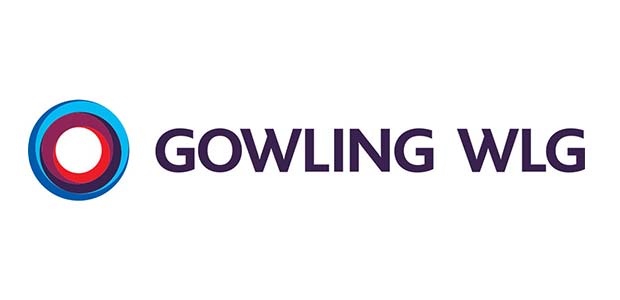
For August’s instalment of Insider’s Story, I met up with not only one of my favourite HR professionals, but one of my favourite people in general, to talk about ‘resourcing transformation’.
The wonderful Jo Franklin, Head of Resourcing for Gowling WLG, agreed to sit down with me and have a chat about the huge ‘resourcing transformation’ journey they have been on.
She explains how they have transformed their resourcing strategy and well and truly stepped out of the ‘Wragge & Co shadow’.
Gowling WLG has been on quite a ride over the past few years…
What was once Wragge & Co, then Wragge, Lawrence Graham & Co, (before joining forces with top Canadian law firm Gowlings) and finally Gowling WLG was born.
Jo joined the business post-merger in the early part of 2016. They had gone from being in the Top 25 to overnight becoming a part of a major international law firm. As a result of this, their resourcing and talent strategies needed some serious development and she was in responsible for resourcing transformation.
“ It was a testing period”, Jo admits “as I joined, three of my most experienced team members were going on maternity leave. All of that knowledge and experience leaving at a time of considerable change!”
The Transformation
The vision was clear; to make Gowling WLG a recognised brand in the marketplace, to compete against the top law firms and to secure the best talent across lateral, business services and early talent.
The perception that the resourcing team was very much an administrative support function was something that Jo wanted to change. As around 60% of the team’s time had been spent on recruitment admin, they wanted to adopt a business partnering approach and get more stakeholder facetime.
Jo says, “We wanted to have a position in the market where we could source directly, because of our reputation.”
To put this into perspective in the legal sector, agency hire rates sits at around 60-70%. Jo had set herself a target of direct sourcing at 60%.
In order to achieve this, the team needed to look at a number of things including Employer Brand, EVP and Internal Engagement.
How did you do it?
One of the key pieces to landing any big transformation is to engage with your people and to take them along on the journey. They wanted to focus on their people, rather than the work they do.
Gowling decided to undertake 360-degree feedback to determine their true employer values.
This consisted of 12 workshops with people across the brand, from trainee to partner level. It also involved leadership interviews and market research to understand what made working at Gowling WLG different and unique.
From this developed an employer value proposition (EVP)framework upon which the new careers site would be based.
Headed up by the team members returning from maternity leave, they employed the service of two specialist agencies to convert their EVP into attraction messaging and built their careers site around this.
In order to meet their own challenging direct sourcing targets (60% of all offers), their social media and direct hiring activity needed to be supported by a creative, informative and content-rich careers website.
This is Gowling WLG’s first full careers site. For several years, the firm has had an early talent website, but the offering for fee earners and business service professionals was limited, and the team was keen to promote their new enhanced apprenticeship programme. Now they have detailed information on the firm, its culture and all the different job families in one place, which is presented in a creative and engaging way.
‘You can’t just tell people what your values are’
A common mistake that many organisations make is just announcing what their Values and EVP are, rather than engaging with people, which can alienate people and leave them feeling unsure of their identity.
Rather than just announcing firm values, it is far more effective to live and breathe them, and they slowly infiltrate into the business as usual.”
There must be a mindset change for any transformation to be implemented successfully.
Jo and her team did this through empowering the people around them.. Rather than focussing on what was wrong with the current approach, they demonstrated how great things really could be by sharing knowledge and helping people to understand that there are other ways of attracting great candidates…
Jo says, “Don’t tell people, let them experience it”
Developing a ‘Dream Team’
Jo recognised that in order to truly provide a value-add service to the business, developing her team’s offering was key.
At the time of joining, their agency spend was substantial…
Due to previously having a limited view of forthcoming requirements, the firm had become used to a reactive approach to recruitment and this was going to be a huge change for them.
Proving the model worked and providing tangible results in the first few months was vital, both in the quality of candidates introduced and time to hire.
One of the key hires to the team was Chris Lake, who had an exceptional track record in direct resourcing, having worked for a legal agency for 6 years prior to joining Gowling WLG.
Jo empowered the team to start taking a more forward-thinking approach. They began to identify and map the key markets within the firm’s key sector areas, understanding the active candidate market but more importantly building a picture of passive candidates that could be developed into a talent audience for the future.
The resourcing advisors started to build trust with key stakeholders and taking time to understand their business objectives and working with managers to plan for skills gaps and provide competitor insight and analysis to build credibility.
‘This wasn’t an original solution’
Now Jo, whilst undeniably fantastic, isn’t a part of some kind of secret recruitment magic circle!
The direct sourcing model isn’t an original solution, however, it’s usage within the legal sector is limited within the Top 100 law firms. In addition to this, varied results and methods are evident across the sector – i.e. direct sourcing limited to business services/non-fee earner roles or paralegal level recruitment in some firms.
What is clear, however, is that Jo has opened her stakeholders’ eyes to ‘what could be’ if they trusted in her and her team.
By really engaging with your people, being armed with knowledge and taking a genuine interest in your stakeholders, you can build fantastic relationships.
This doesn’t necessarily happen over-night. Jo herself will admit it has been in huge part down to her teams’ sheer persistence, determination and energy to truly add value that this transformation has been such a huge success
Where are they now?
12 months after Jo and Chris joined the business, Gowling WLG had succeeded in reducing its cost per hire by 41%. The time to hire for the new direct talent strategy 30% lower than for previous hires through recruitment agencies.
The success has continued with the team meeting their direct hire targets year on year, producing real and credible savings on agency spend, whilst still focusing time on building relationships with their key agencies to help with niche roles. By April 2018, they had exceeded their initial 60% goal.
The team were also delighted to receive a prestigious HR in Law award in May for their careers site, which they are now extending out to their international offices, the first being Dubai.
I’d like to say a huge thank you to Jo Franklin for taking part in my Insiders Story series! To find out more about life at Gowling WLG, visit their careers page at: https://gowlingwlg.com/en/careers
For all things interim management, change & transformation, get in touch with us via the info form below, and if you would like to feature in our ‘Insiders Story’ blog, email me on kate@refind.co.uk
You can view more about Kate Wass our executive interim specialist here











